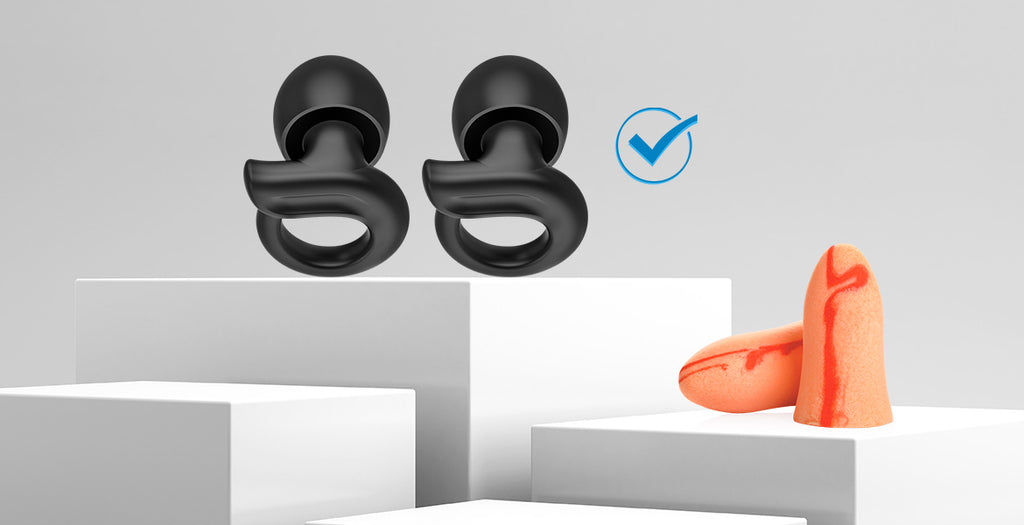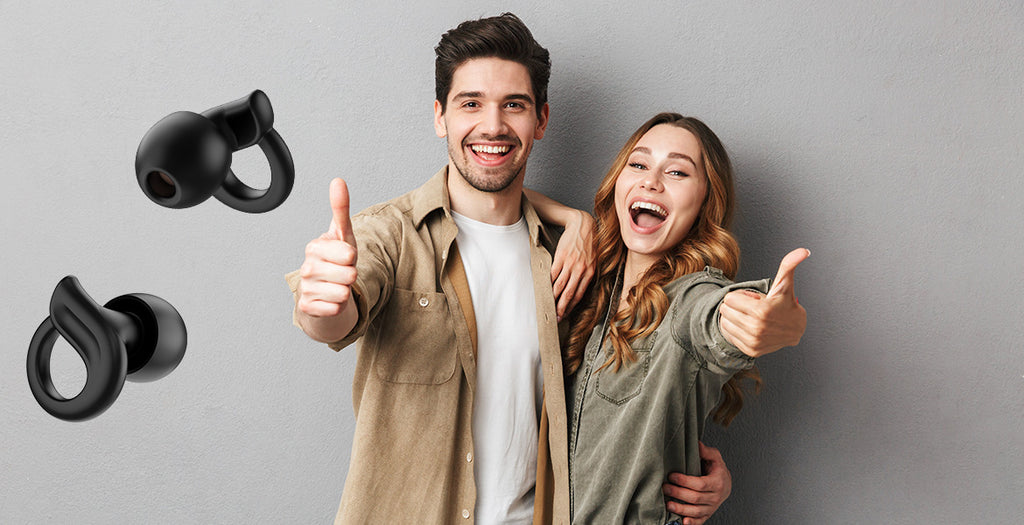Earplugs are an essential item for anyone who frequently experiences loud noise levels. From construction workers to musicians, earplugs help prevent noise-induced hearing loss and tinnitus (ringing in the ears). There are two main types of disposable earplugs - silicone and foam. Both offer hearing protection but have key differences in materials, fit, effectiveness, reusability, and cost.
This blog post will examine the pros and cons of silicone versus foam earplugs. We'll compare comfort levels, noise reduction ability, durability, environmental impact, and value for money. By the end, you'll know which earplug type is right for your specific needs and budget. Proper ear protection allows you to maintain healthy hearing for years.
What Is the Difference Between Silicone Ear Plugs and Foam Ear Plugs?

Comfort Levels
An ideal pair of earplugs should form a tight seal in the ear canal to block noise while remaining soft and comfortable even during extended wear.
Silicone earplugs are crafted from flexible, medical-grade silicone that molds to the unique shape of the user's ear canal. This customizable fit prevents discomfort. The smooth silicone surface also reduces irritation in the sensitive skin of the ear canal. Silicone itself is hypoallergenic as well. Many high-end silicone earplugs are ergonomically designed for maximum comfort.
Foam earplugs must be compressed before being inserted into the ear canal so they can later expand and fill the space. This tight fit requires constant outward pressure, which can feel uncomfortable over time as the foam tries to regain its original shape. The inner ear canal is also very sensitive, so repeated insertions of foam earplugs can irritate the skin. Overall, silicone wins for long-wearing comfort.
Noise Reduction Ability

The entire point of earplugs is to effectively block loud and damaging sounds while allowing normal tones to be heard. Both silicone and foam are effective, but foam earplugs tend to have slightly higher noise reduction ratings (NRR).
Independent lab tests measure the NRR of earplugs by exposing users to loud noises both with and without the earplugs inserted. The NRR is the amount of noise reduction (in decibels) provided. Foam earplugs frequently have NRRs of 30-33 decibels, while silicone earplugs often range from 20-26 decibels.
However, real-world use doesn't always reflect lab results. Silicone earplugs create an exceptional seal and maintain their noise reduction over time. Foam earplugs can permanently compress with extended use, degrading their noise-blocking abilities until they are replaced. For most everyday purposes, foam or silicone earplugs provide adequate protection.
Durability and Reuse
The materials used in earplugs also determine how long they will last and if they can be reused. Durability and reuse are important factors affecting the long-term value of earplugs.
Silicone is an extremely durable, flexible material that regains its original shape after being compressed. Silicone earplugs can be removed, cleaned, and reused multiple times without losing their noise-blocking capabilities. This makes them a cost-effective choice.
Foam earplugs are designed to be single-use. The foam cells break down after being compressed for insertion in the ear canal. The earplugs become less resilient and don't fully re-expand to fill the ear canal. Reusing foam earplugs reduces their effectiveness. Foam also deteriorates with exposure to dirt, oils, and moisture. Overall, silicone is the longer-lasting, reusable option.
Environmental Impact
Many foam earplugs are made from polyvinyl chloride (PVC) plastic. PVC contains toxic additives, including lead, cadmium, organotins, and phthalates. Exposure to these chemicals poses health risks to workers and damages the environment.
Silicone earplugs are generally made from safer, medical-grade silicone. Silicone is also more durable and reusable, leading to less waste. The environmental impact of PVC makes foam less desirable, especially for industries that use earplugs in high quantities.
Value for Money
Foam earplugs are the more affordable option. But their single-use nature means a constant supply of new earplugs must be purchased. The costs add up over time.
Silicone earplugs have higher costs. But their reusability results in significant long-term savings. One pair of silicone earplugs can be used with proper care for six months or more. Individuals or companies should consider total costs over time, not just the initial purchase price.
Silicone earplugs represent better value for money with their reusability and durability. Foam earplugs are cheaper for one-time or very sporadic use.
Recommendation: Silicone Ear Plugs vs. Foam Ear Plugs

After comparing the two main types of disposable earplugs, silicone is generally the better choice for most users. Silicone offers reliable noise reduction, all-day comfort, and long-term savings from reuse. Foam earplugs can work well for occasional requirements but lack durability.
Of course, personal fit and comfort will determine which earplug type works best. Those with very narrow ear canals may find foam more comfortable. Budget constraints can make cheaper foam earplugs more practical. Testing out different styles of both foam and silicone earplugs is recommended.
For frequent earplug users or companies buying in bulk, invest in high-quality silicone earplugs. Protect your hearing health and avoid unnecessary waste. Your ears and the environment will thank you.
Conclusion
Earplugs are vital for blocking out damaging noise levels and preventing hearing loss. Silicone and foam are the two main disposable earplug types. This comprehensive comparison analyzed key differences in comfort, noise reduction, reusability, environmental impact, and cost.
For most users, silicone earplugs are the better option, with their comfortable fit, noise-blocking abilities, durability, and long-term value. However, foam earplugs can provide economical options for occasional needs. Testing different earplug styles ensures you find the right fit and protection for your unique ears.
FAQs
Q1: Do earplugs reduce sound quality for music or conversations?
A: There may be some sound muffling, but silicone earplugs are designed to block harmful loud noises while still allowing you to hear normal ranges of speech and music. Specialty earplugs for concerts or musicians aim to preserve sound quality.
Q2: Can earplugs cause ear infections?
A: If not properly cleaned and dried, reused earplugs can trap moisture and irritants against the eardrum, leading to infection. Never share earplugs with others, either. Follow all hygiene and cleaning guidelines from your earplug brand.
Q3: How do you clean reusable silicone earplugs?
A: Silicone earplugs should be cleaned regularly with mild soap and warm water. Make sure they are completely dry before reinserting to avoid ear infections. Follow any additional cleaning instructions from the manufacturer.













1 thought on “Silicone Ear Plugs vs Foam Ear Plugs: What Is the Difference?”
Wilbur Kate
No more about your plugs. I want to know about your plugs.